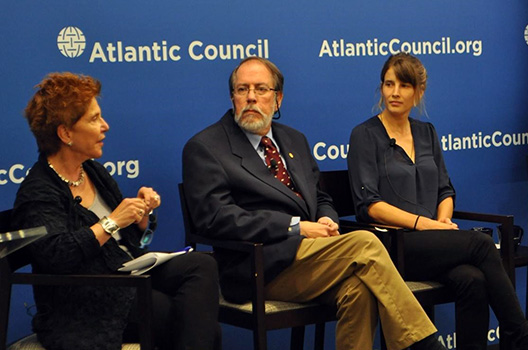 On September 10, the Atlantic Council’s Young Atlanticist Program hosted the first of a series of Arctic events developed by the ELEEP Network’s Arctic Climate Change Emerging Leaders (ACCEL) Fellows. Examining the role art plays in communicating the science of climate change to the public, artists Diane Burko and Mia Feuer presented their Arctic inspired artwork, and discussed their experiences traveling to the Arctic.
On September 10, the Atlantic Council’s Young Atlanticist Program hosted the first of a series of Arctic events developed by the ELEEP Network’s Arctic Climate Change Emerging Leaders (ACCEL) Fellows. Examining the role art plays in communicating the science of climate change to the public, artists Diane Burko and Mia Feuer presented their Arctic inspired artwork, and discussed their experiences traveling to the Arctic.
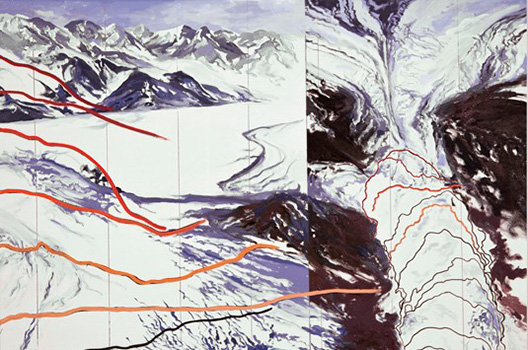
Diane Burko, Columbia Glacier Lines of Recession, 2011, depicts the relative decrease in size of the Columbia Glacier, Alaska.
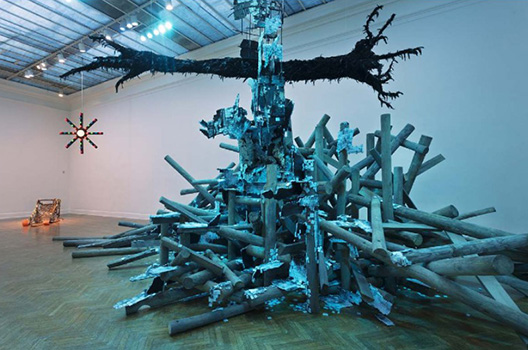
From the scientific community, the panel also featured commentary from Dr. Noel Broadbent of the Smithsonian Museum of Natural History’s Arctic Studies Center, Dr. Miriam Jones of the US Geological Survey, and Dr. John Farrell, Executive Director of the US Arctic Research Commission. The event was moderated by Dominic Marcellino, Executive Vice President of the Ecologic Institute of the US and founding member of the ELEEP Network and ACCEL Program.
“All these images talk to you about…how nature changes the landscape…However, I started realizing that now in the 21st century, in the Anthropocene era as some people say, we as human beings are beginning to change nature rather than the other way around…” said Burko, whose trips to both the North and South poles inspired her to paint what she saw. “The Polar regions, as we learned from Mia…they’re like no other landscape in the world, they’re magical, they’re distant, terribly unfamiliar, foreign, they’re eerily still and loudly active…everything is enveloped in a strange aura of light, color and atmosphere…”
Though much discussion examined the similarities and opportunities for art & science, differences between the professions were addressed as well. “As a scientist, I enjoy looking at art, because I love seeing another perspective on the same things I look at.”
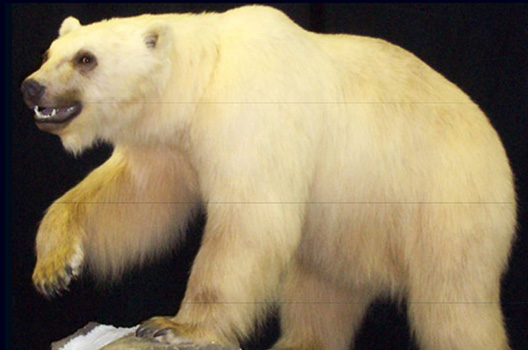
A photo of a “pizzly” or “growler” from Dr. John Farrell’s presentation. Pizzlys are polar bear/grizzly bear hybrids becoming more common as polar bears are forced by receding ice to spend more time searching for food on land. The pizzly is “a picture of climate change, as biologically expressed” – John Farrell
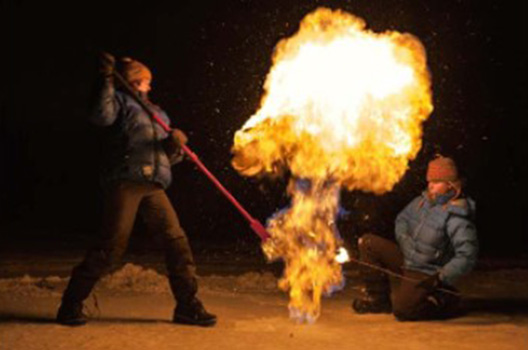
A photo from Miriam Jone’s presentation – on a frozen lake filled with methane bubbles. If punctured, the methane will sometimes ignite.
Communicating Arctic issues is a core objective of the ACCEL Fellowship Program. With the launch of Arctic 101, current fellows Dayanita Ramesh and have developed a platform to introduce the public to issues of Arctic policy and science through innovative media, including art. Addressing the need for this understanding of the Arctic and our connection to the region, Dr. Broadbent added, “Speaking as an archeologist, the connection between art and science is an ancient one…modern humans, complex technologies, languages and art itself roughly developed during the end of the last ice age…it can be said today that humans are a product of an Arctic environment, we are all children of the ice age, believe it or not.”
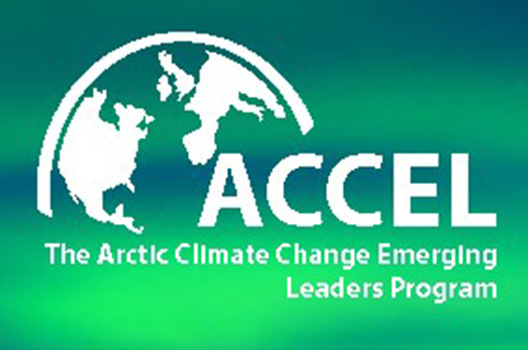
For more information about our speakers:
